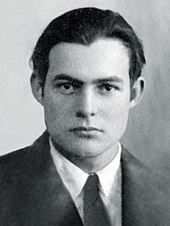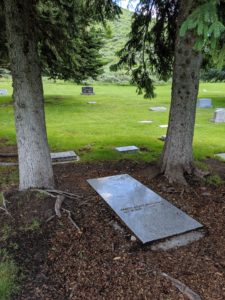 In 1936, Professor Harry Burns of the University of Washington’s English department “was sitting at a table in a cafe in Key West when an intersting looking person” who turned out to be Ernest Hemingway “took a chair beside him and they struck up a conversation.”
In 1936, Professor Harry Burns of the University of Washington’s English department “was sitting at a table in a cafe in Key West when an intersting looking person” who turned out to be Ernest Hemingway “took a chair beside him and they struck up a conversation.”
Thus began a friendship that would lead to Hemingway inserting a minor character modeled on Burns (“Professor MacWalsey”) in Hemingway’s next novel, To Have and Have Not, published a year later in 1937, and a visit by Burns to the Hemingway’s home in Cuba, where Burns read the manuscript of The Old Man and The Sea.
According to an article published in the October 1936 issue of Washington Alumnus, and excerpted in the June 1998 issue of Columns (both of which are the same magazine, the alumni magazine of the University of Washington), that first conversation in Key West went like this:
“Hemingway revealed … that he was a radical when some of the prletarian critics who now take him to task were not yet out of their dada-ist swaddling clothes; that contrary to Gertrude Stein’s version of the matter, it was not Stein who taught Hemingway waht he knows about writing but the other way around; that he considers college professors to be a good sort and would like to be one himself; that John Dos Passos is a better writer than John O’Hara and Scott Fitzgerald because he has not only genius but brains.”
(See note here; the quote is from a printed copy of Columns, so I have no link for that.)
This is interesting on a number of levels: What he said about Stein; that he wanted to be a college professor (I have reason to suspect that some of this blog’s readers are college professors, and when they read this, they may shake their heads and think, “he had no idea of what this job is like … “); and, most of all, his observation that genius and brains are two different things (about which I wholeheartedly agree).
This encounter took place before Hemingway wrote For Whom The Bell Tolls and The Old Man and the Sea, but by then he was already famous as the author of the Nick Adams stories, The Sun Also Rises, and A Farewell to Arms. I read Fitzgerald in college, and I’ve read much of Hemingway’s work (The Old Man and the Sea is my favorite novel and I’ve read it dozens of times), but I’m not familiar with the work of Dos Passos (who was prominent in the 1930s) or O’Hara (who today is considered by literary cognescenti a good but neglected writer).
 Hemingway, of course, needs no introduction (at least, I think most people today know who he was; and, as far as I know, his work is still widely read). He is remembered not only for his unique writing style (which inspires, among other things, parody; see the “Bad Hemingway” website here, which is dedicated to writing examples of “good bad Hemingway”; and read about the now-defunct “Bad Hemingway Contest” here; in case you’re wondering, “There is no way to define what good bad Hemingway is. You have to have an ear for it.” — read about that here), but also his adventurous, tumultous, and in the end tormented life.
Hemingway, of course, needs no introduction (at least, I think most people today know who he was; and, as far as I know, his work is still widely read). He is remembered not only for his unique writing style (which inspires, among other things, parody; see the “Bad Hemingway” website here, which is dedicated to writing examples of “good bad Hemingway”; and read about the now-defunct “Bad Hemingway Contest” here; in case you’re wondering, “There is no way to define what good bad Hemingway is. You have to have an ear for it.” — read about that here), but also his adventurous, tumultous, and in the end tormented life.
No, it wasn’t Hemingway who wrote, “It was a dark and stormy night, and somewhere in the distance a dog barked,” it was one of his imitators. I forget which one. It doesn’t matter.
I remember looking for Papa Hemingway’s grave in the Ketchum cemetery when I passed through there in the 1970s. I was in the right cemetery, but I couldn’t find it.
Photos: Hemingway’s 1923 passport photo and his grave in Ketchum, Idaho.